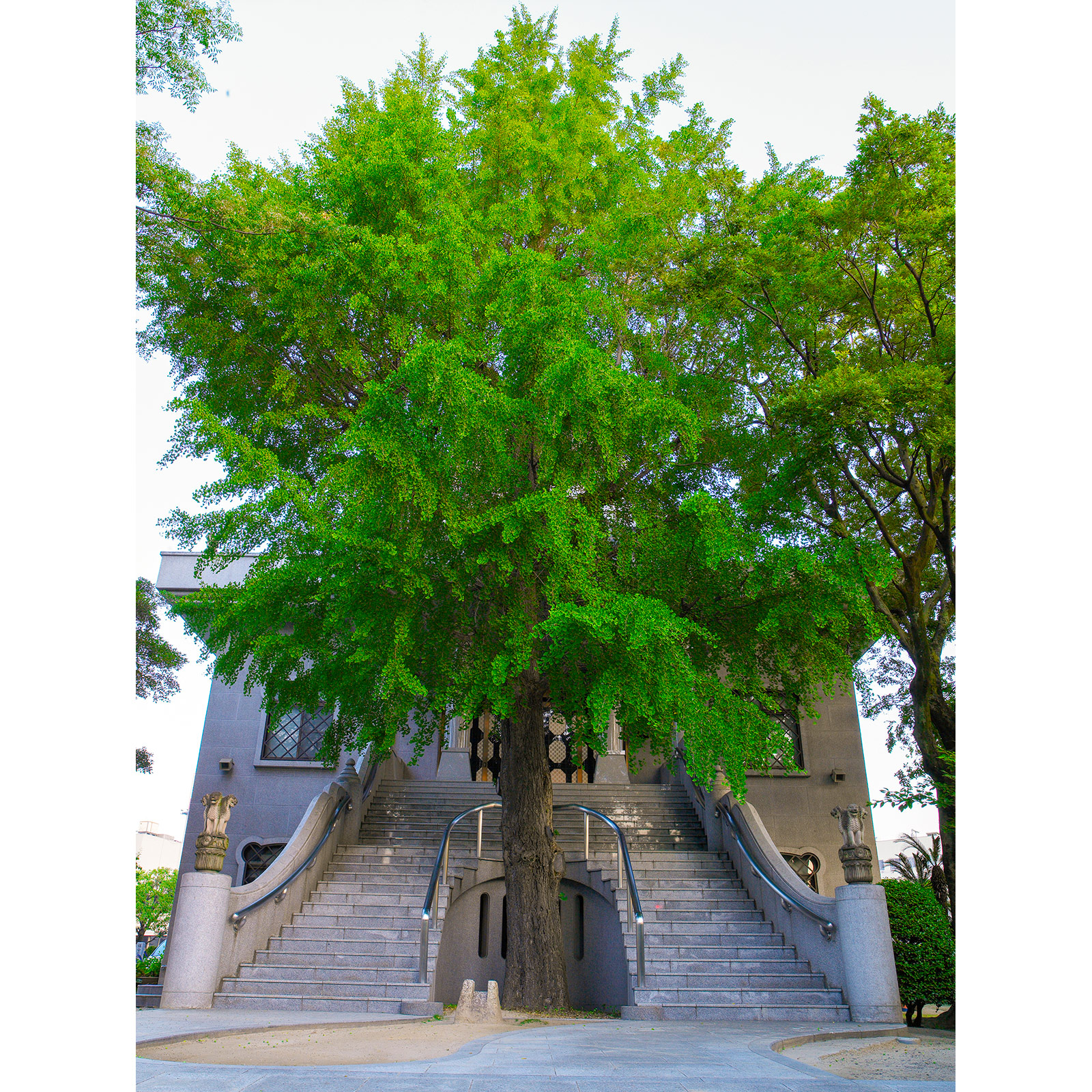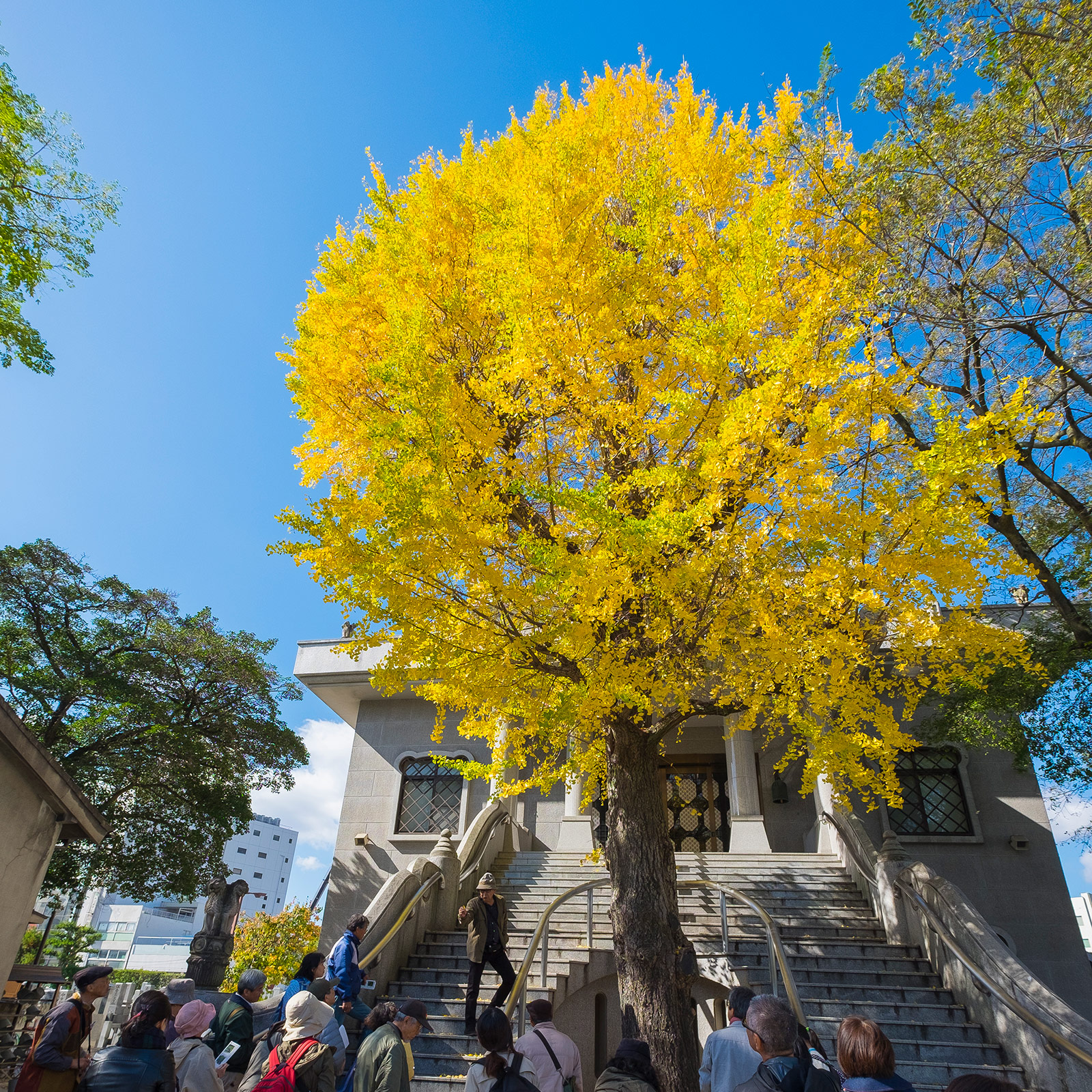報専坊(ほうせんぼう)の大きなイチョウは、この木を守るために設計された、本堂の階段の真ん中に立っています。寺の跡取りが生まれたとき、記念に植えられた誕生木でした。原爆によって傷つきながらも生き続け、焼け野原に立つその姿に、多くの人が励まされたそうです。幹はわずかに傾き、爆心地側には縦に傷が残っています。1993年、本堂を建て替えるにあたって、敷地の中央にあるイチョウをどうするか、話し合いが行われました。伐らずに残したいという意見がまさり、階段は木を包み込むような設計に。根元は土のままにして、風を通す通気口もつくられました。秋には黄金色に染まり、ひときわ美しい姿を見せてくれる被爆樹木です。
※厳な場所ですので参拝者に迷惑になる行動は控えましょう。場合により立ち入りをご遠慮いただくことがあります。
Designed to protect the hibaku tree, the large gingko tree of Hōsenbō Temple stands in the middle of the stairs to the main temple building. Originally planted as a birthday tree to celebrate the birth of the heir to the temple, the tree survived the bombing despite the damages it received and went on to inspire courage and give hope to the people as it stood tall on the burnt plains of the city. The trunk leans ever so slightly, and there is a scar down the side of the trunk that faces the hypocenter. In 1993, with plans to rebuild the temple building, discussions were held about what to do with the gingko tree that stood in the center of the temple grounds. Support to preserve the tree was overwhelming, and the stairs to the main building were designed to go around the tree. They also left the soil around its roots and created an opening for ventilation to ensure air flow to the tree. In the fall, the gingko turns a brilliant shade of bright yellow and is one of the most beautiful hibaku trees.


